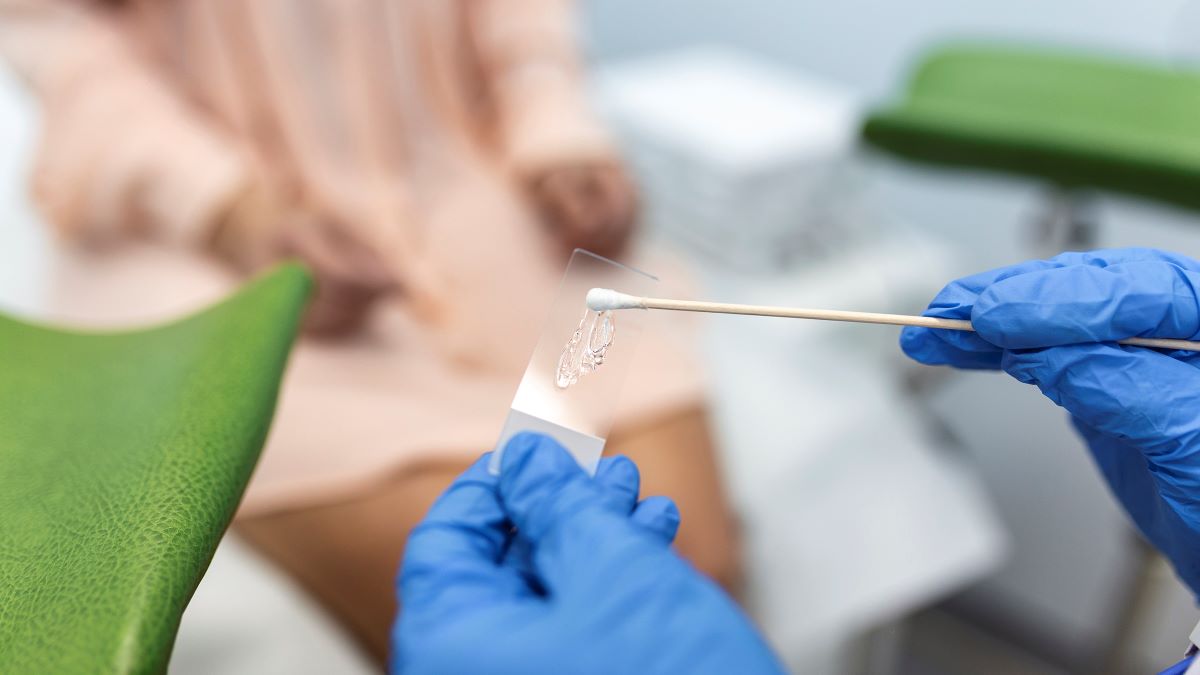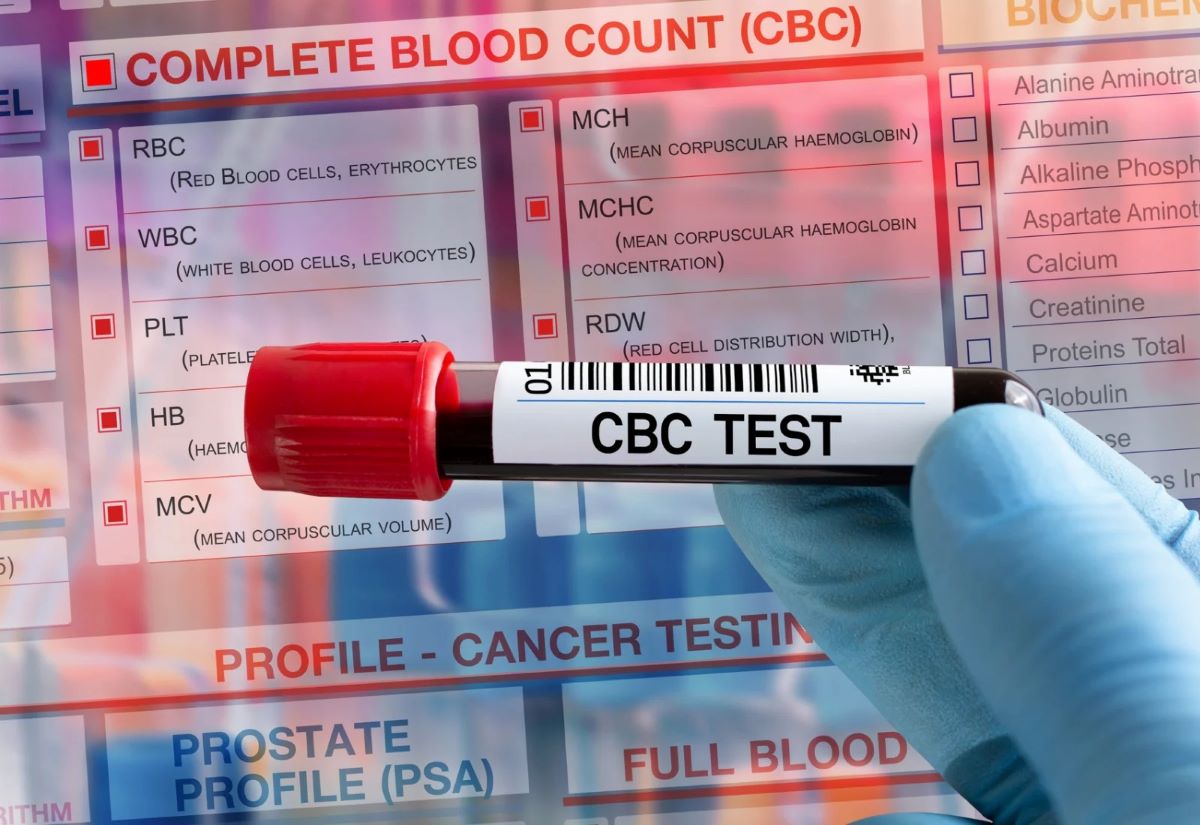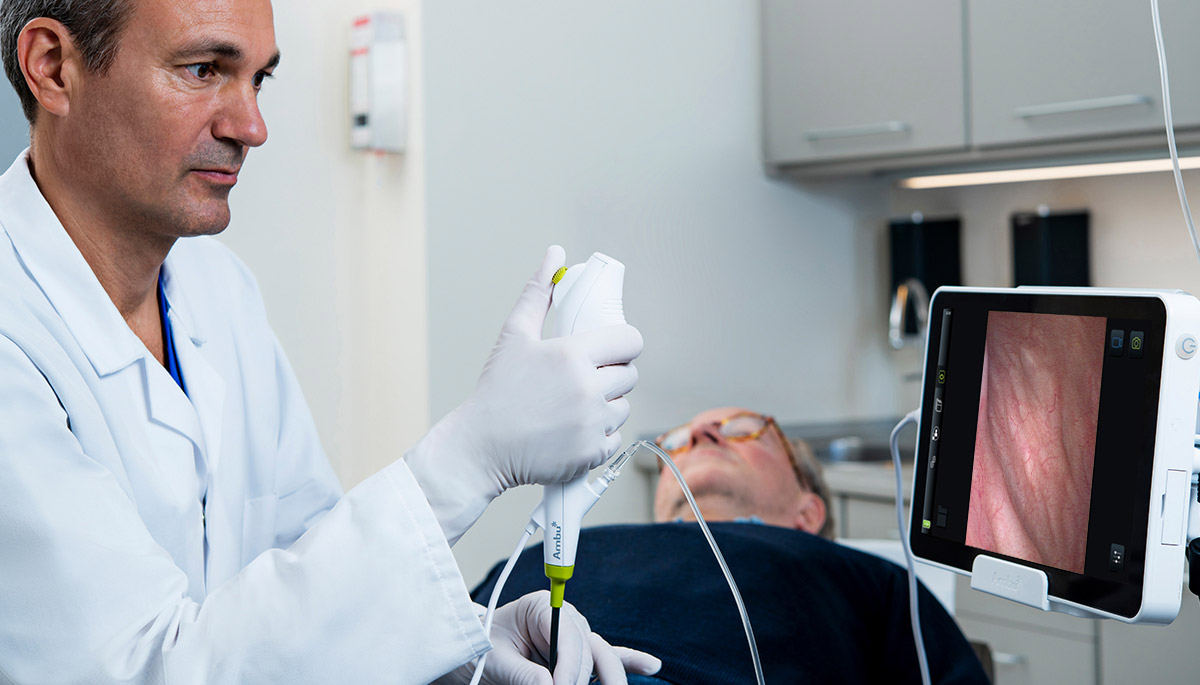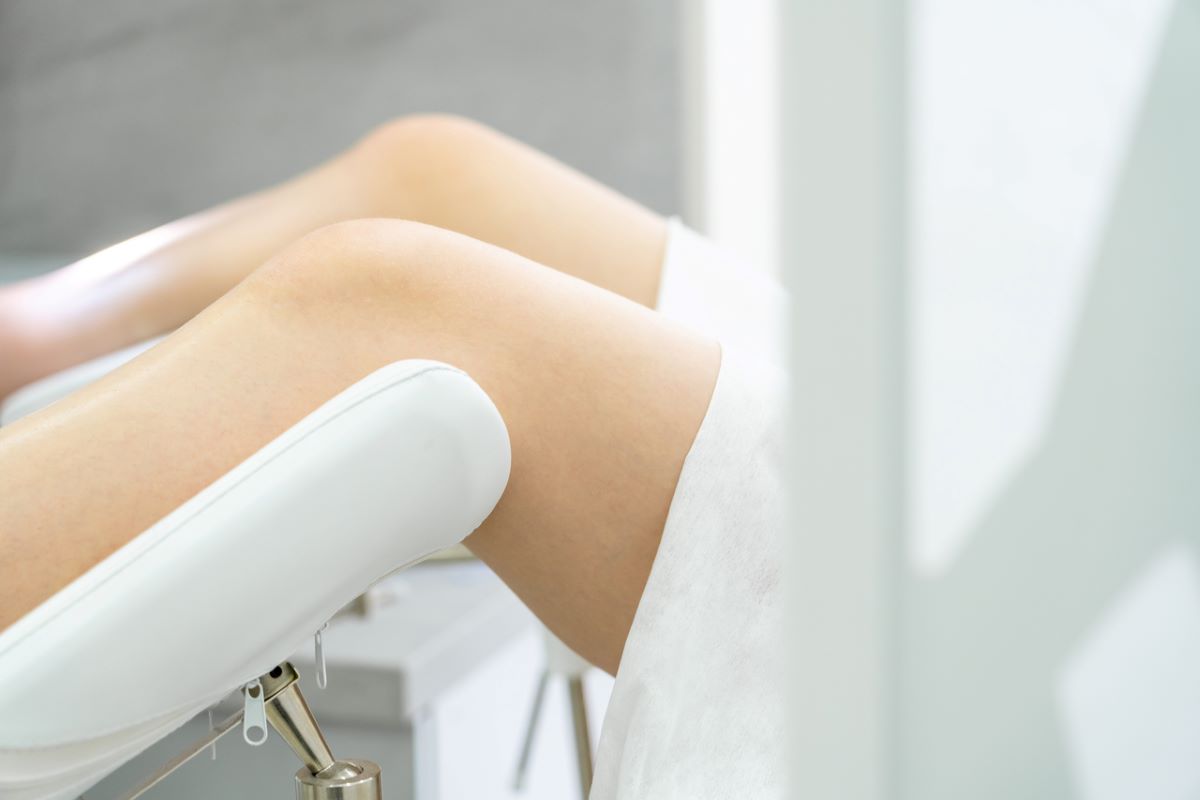

Finance
How Much Pap Smear Cost Without Insurance
Published: November 23, 2023
Find out the cost of Pap smear without insurance and explore affordable finance options for this important screening test.
(Many of the links in this article redirect to a specific reviewed product. Your purchase of these products through affiliate links helps to generate commission for LiveWell, at no extra cost. Learn more)
Table of Contents
Introduction
Welcome to our comprehensive guide on the cost of Pap smears without insurance. This article aims to provide you with valuable information about Pap smears, their importance, and the potential financial implications for individuals who do not have insurance coverage.
Pap smears are a crucial component of women’s preventive healthcare. They help detect early signs of cervical cancer and other abnormalities in the cervix, allowing for early intervention and treatment. Regular screenings can significantly reduce the risk of developing cervical cancer and improve overall health outcomes.
However, the cost of Pap smears can be a barrier for individuals without insurance coverage. Without access to affordable healthcare services, many people forego or delay screenings, putting their health at risk. In this article, we will explore the typical costs associated with Pap smears when insurance is not involved and discuss strategies to address the financial challenges.
Whether you are uninsured or considering an alternative to your insurance plan, understanding the potential costs associated with Pap smears and exploring options for affordable care is essential. By empowering yourself with knowledge, you can make informed decisions about your healthcare and take proactive steps towards maintaining a healthier future.
What is a Pap Smear?
A Pap smear, also known as a Pap test or cervical cytology, is a medical procedure used to screen for cervical cancer and detect any abnormalities in the cells of the cervix. It is a simple and relatively quick test that involves collecting cells from the cervix and examining them under a microscope.
The cervix is the lower part of the uterus that connects to the vagina, and it plays a crucial role in a woman’s reproductive system. The cells of the cervix can sometimes undergo changes that may indicate the presence of pre-cancerous or cancerous conditions.
During a Pap smear, a healthcare provider will use a small brush or spatula to gently collect cells from the cervix. The cells are then placed on a glass slide or placed in a liquid preservative solution and sent to a laboratory for analysis.
At the lab, trained professionals examine the collected cells under a microscope to check for any abnormalities. These abnormalities can range from minor cell changes to more severe precancerous or cancerous conditions. The results of the Pap smear can help healthcare providers identify any potential issues early on and recommend further diagnostic tests or treatment if necessary.
Pap smears are typically performed during a pelvic exam, and they are recommended for most women starting around the age of 21. How frequently a woman should undergo a Pap smear depends on several factors, including her age, medical history, and previous Pap smear results. Most healthcare professionals recommend regular screenings every three to five years for most women.
It’s important to note that a Pap smear is not a test for diagnosing cervical cancer. Rather, it is a preventive screening tool that allows for early detection of potential issues. If abnormalities are found during a Pap smear, further diagnostic tests, such as a colposcopy or biopsy, may be performed to confirm or rule out the presence of cancer.
Overall, Pap smears are a vital tool in women’s healthcare, aiding in the early detection and prevention of cervical cancer. Regular screenings, along with other preventive measures such as HPV vaccination and safe sex practices, can significantly reduce the risk of developing cervical cancer and lead to better health outcomes.
Importance of Pap Smears
Pap smears play a crucial role in women’s preventive healthcare. Here are some key reasons why Pap smears are important:
- Early Detection of Cervical Cancer: Pap smears can detect early signs of cervical cancer or pre-cancerous conditions. By identifying abnormalities in the cells of the cervix, healthcare providers can intervene early and provide timely treatment, significantly improving the chances of successful outcomes.
- Reducing the Risk of Cervical Cancer: Regular Pap smears, coupled with other preventive measures like HPV vaccination and safe sex practices, can greatly reduce the risk of developing cervical cancer. Detecting abnormalities in their early stages allows for prompt intervention and treatment, potentially preventing the progression of pre-cancerous conditions to cancer.
- Monitoring and Managing Abnormalities: For individuals with previously detected abnormal Pap smear results, regular screenings help monitor any changes in the cervix over time. This allows healthcare providers to closely monitor and manage abnormal cells, reducing the risk of developing cervical cancer.
- Screening for HPV Infections: Human papillomavirus (HPV) is a sexually transmitted infection that increases the risk of developing cervical cancer. Pap smears can also detect the presence of HPV in the cervix, enabling healthcare providers to take appropriate measures and provide necessary counseling or treatment.
- Providing Peace of Mind: Routine Pap smears can offer peace of mind to individuals by providing reassurance about their cervical health. Knowing that regular screenings are being performed allows individuals to take an active role in their preventive healthcare, promoting overall well-being.
It’s important to remember that Pap smears are not only beneficial for women who are sexually active or at higher risk of cervical cancer. They are recommended for most women, typically starting around the age of 21, irrespective of sexual history or HPV vaccination status. Regular screenings allow healthcare providers to establish a baseline for future comparisons and monitor any changes in the cervix over time.
By prioritizing Pap smears as part of routine healthcare, women can take a proactive approach to their well-being, detect potential issues early, and ensure optimal cervical health. Regular screenings empower individuals to make informed decisions about their healthcare and promote early intervention, ultimately leading to better health outcomes.
Cost of Pap Smears without Insurance
The cost of a Pap smear can vary depending on various factors such as the healthcare provider, location, and additional tests or services required. Without insurance coverage, individuals can expect to pay out-of-pocket for the full cost of the Pap smear.
On average, the cost of a Pap smear without insurance ranges from $50 to $200. This cost typically includes the laboratory analysis of the collected cells and the fee charged by the healthcare provider for performing the procedure.
It’s important to note that this estimate only covers the basic cost of the Pap smear itself. Additional fees may apply if further diagnostic tests or procedures, such as colposcopy or biopsies, are necessary based on the results of the Pap smear. These added costs can significantly increase the overall expense.
It’s worth mentioning that prices can vary considerably depending on the healthcare provider and geographical location. For example, urban areas may have higher costs compared to rural regions. It is advisable to research and contact different healthcare providers to inquire about their specific pricing structure for Pap smears.
Though the cost of Pap smears without insurance can be a financial burden, it’s crucial not to neglect this essential preventive screening. Catching potential cervical abnormalities early can prevent more serious health issues and, in the long run, save individuals from incurring higher medical costs associated with advanced cervical cancer treatment.
If the cost of a Pap smear without insurance is prohibitively high, there are alternative options available, such as low-cost or free clinics, community health centers, or government-funded programs, which we will explore further in the next section. It’s important to seek out these resources and find a solution that fits within your budget while prioritizing your cervical health.
Remember, the cost of a Pap smear should not deter individuals from seeking this critical screening. It’s essential to prioritize preventive healthcare and explore financial assistance programs or flexible payment options available to ensure access to this vital test.
Factors Affecting the Cost of Pap Smears
Several factors can influence the cost of Pap smears, both with and without insurance coverage. Understanding these factors can help individuals navigate the financial aspects of this important screening test. Here are some key factors that can affect the cost:
- Healthcare Provider: The cost of a Pap smear can vary depending on the healthcare provider you choose. Different providers may have different pricing structures based on their location, reputation, and the services they offer.
- Geographical Location: The cost of healthcare services, including Pap smears, can vary based on your geographical location. Urban areas, where the cost of living is generally higher, may have higher prices compared to rural locations.
- Additional Tests or Services: If the results of the Pap smear indicate abnormalities, further diagnostic tests or procedures may be necessary. These additional tests can incur added costs on top of the initial Pap smear expense.
- Laboratory Fees: The laboratory analysis of the collected cells is an essential part of the Pap smear process. The cost of laboratory services can vary, impacting the overall cost of the Pap smear.
- Health Insurance Coverage (If Applicable): For individuals with insurance coverage, the cost of Pap smears may be partially or fully covered under their plan. The specific coverage and out-of-pocket expenses can vary depending on the insurance provider and the individual’s policy.
- Income-Based Assistance Programs: There may be income-based assistance programs available for individuals without insurance or with limited financial resources. These programs can help reduce or eliminate the cost of Pap smears, ensuring access to this important screening.
It’s crucial to research and compare the cost of Pap smears from different healthcare providers in your area. Contacting clinics, community health centers, and government-funded programs that offer reproductive health services may help individuals find more affordable options.
Additionally, discussing the cost of Pap smears with healthcare providers and exploring payment plans or discounts can be worthwhile. Some providers offer sliding-scale fees or discounts based on income, making the cost more manageable.
Remember, cost should not be a barrier to receiving vital preventive healthcare services like Pap smears. By exploring these factors and considering alternative options, individuals can find ways to make this important screening test more accessible and affordable.
Low-Cost and Free Pap Smear Options
For individuals without insurance or who may face financial constraints, there are low-cost and free options available to access Pap smears. These options ensure that individuals can still receive this important preventive screening regardless of their financial situation. Here are some options to consider:
- Community Health Centers: Community health centers are nonprofit organizations that provide comprehensive healthcare services, including reproductive health screenings like Pap smears, on a sliding fee scale based on income. These centers prioritize accessibility and provide affordable or even free services for individuals who qualify.
- Family Planning Clinics: Family planning clinics, such as Planned Parenthood, offer reproductive health services, including Pap smears, at reduced costs or on a sliding fee scale. These clinics focus on providing affordable reproductive healthcare to individuals, regardless of their insurance coverage or ability to pay.
- Government-Funded Programs: Some government-funded programs aim to ensure access to Pap smears for individuals who cannot afford them. Programs like the National Breast and Cervical Cancer Early Detection Program (NBCCEDP) provide free or low-cost screenings to those who meet certain income and eligibility criteria.
- Clinical Trials and Research Studies: Participating in clinical trials or research studies related to screening methods, including Pap smears, can sometimes provide free or subsidized access to these tests. These studies not only benefit the participants but also contribute to advancing medical knowledge.
- Local Initiatives and Charitable Organizations: In some communities, local initiatives and charitable organizations may offer free or low-cost Pap smear clinics periodically. These events are often publicized through community organizations, local health departments, or online platforms, so it’s worth staying informed about such opportunities.
It’s important to note that the availability of low-cost or free Pap smear options may vary depending on your location. Researching and contacting local healthcare providers, clinics, or community organizations can help identify resources in your area.
When seeking these low-cost or free options, it is essential to inquire about any additional fees or services that may be associated with the Pap smear, such as laboratory fees or follow-up diagnostic tests. Understanding the full scope of the services and potential costs involved ensures a transparent and affordable experience.
Even without insurance coverage, individuals have avenues to obtain necessary Pap smears at reduced costs or no cost at all. By exploring these options, individuals can prioritize their reproductive health and access the preventive care they need.
Financing Options for Pap Smears without Insurance
For individuals without insurance coverage, financing options can help make the cost of Pap smears more manageable. By exploring different payment strategies and assistance programs, individuals can ensure access to this crucial preventive screening. Here are some financing options to consider:
- Payment Plans: Many healthcare providers offer payment plans that allow individuals to spread out the cost of Pap smears over a period of time. This can be especially helpful for individuals who may not have the full amount available upfront.
- Sliding Fee Scales: Some healthcare providers, clinics, or community health centers use sliding fee scales based on income. These scales adjust the cost of the Pap smear according to the individual’s financial situation, making it more affordable for those with limited resources.
- Health Savings Accounts (HSAs) or Flexible Spending Accounts (FSAs): Individuals who have HSAs or FSAs can use these accounts to pay for Pap smears and other eligible medical expenses. Contributions made to these accounts are tax-free, offering a financial advantage when paying for healthcare services.
- Medicaid or Other Government Assistance Programs: Eligible individuals may qualify for Medicaid or other government assistance programs that provide coverage for preventive screenings, including Pap smears. It’s crucial to research and determine if you meet the requirements for these programs.
- Non-Profit Organizations and Charitable Funds: Some non-profit organizations and charitable funds provide financial assistance or grants to individuals seeking essential healthcare services. These organizations often have specific criteria for eligibility, so it’s important to research and inquire about available options.
- Community Support and Fundraising: In certain cases, individuals without insurance coverage may turn to their local communities for support. Creating fundraisers or seeking help from community resources can offer financial assistance towards the cost of Pap smears and other healthcare needs.
When considering financing options, it’s essential to communicate openly with healthcare providers about your financial constraints. They may be able to provide guidance or recommend the most suitable payment options based on your situation.
Remember, finances should not be a hindrance to receiving important preventive care like Pap smears. By exploring these financing options and seeking support from various resources, individuals can ensure access to this vital screening and prioritize their reproductive health.
Conclusion
Pap smears are a critical component of women’s preventive healthcare, aiding in the early detection and prevention of cervical cancer. Unfortunately, the cost of Pap smears can be a barrier for individuals without insurance coverage. However, there are options available to make this vital screening more accessible and affordable.
We have discussed the importance of Pap smears in detecting cervical abnormalities and reducing the risk of cervical cancer. Regular screenings, coupled with other preventive measures, can significantly improve overall health outcomes.
When it comes to the cost of Pap smears without insurance, we have explored the typical expenses associated with the screening. Factors such as healthcare providers, geographical location, and additional tests or services can impact the overall cost.
We have also highlighted low-cost and free options for individuals seeking affordable Pap smears. Community health centers, family planning clinics, government-funded programs, and local initiatives offer avenues for accessing necessary screenings at reduced costs or no cost at all.
For those who need assistance in financing Pap smears, we have discussed various financing options. Payment plans, sliding fee scales, HSAs or FSAs, government assistance programs, and charitable organizations can help make the cost more manageable.
In conclusion, regardless of insurance coverage or financial constraints, every individual should prioritize their reproductive health through regular Pap smears. Exploring the resources available, maintaining open communication with healthcare providers, and seeking community support can ensure access to this vital preventive screening.
Remember, taking care of your cervical health is an investment in your overall well-being. By being proactive and informed, you can prioritize your health and make the necessary arrangements to afford Pap smears and other essential healthcare services.














